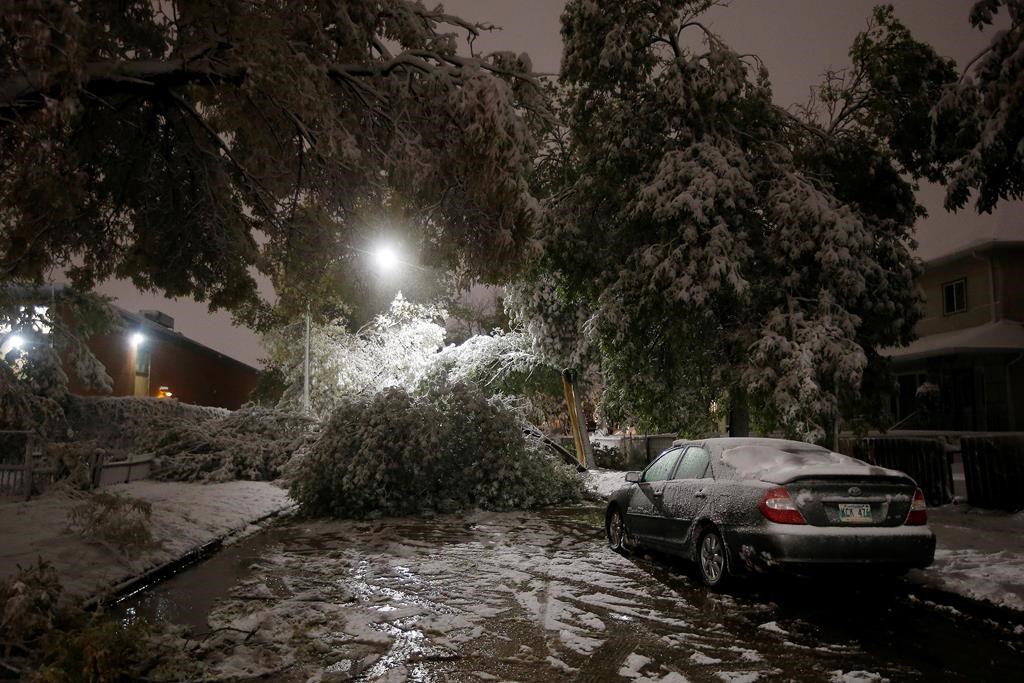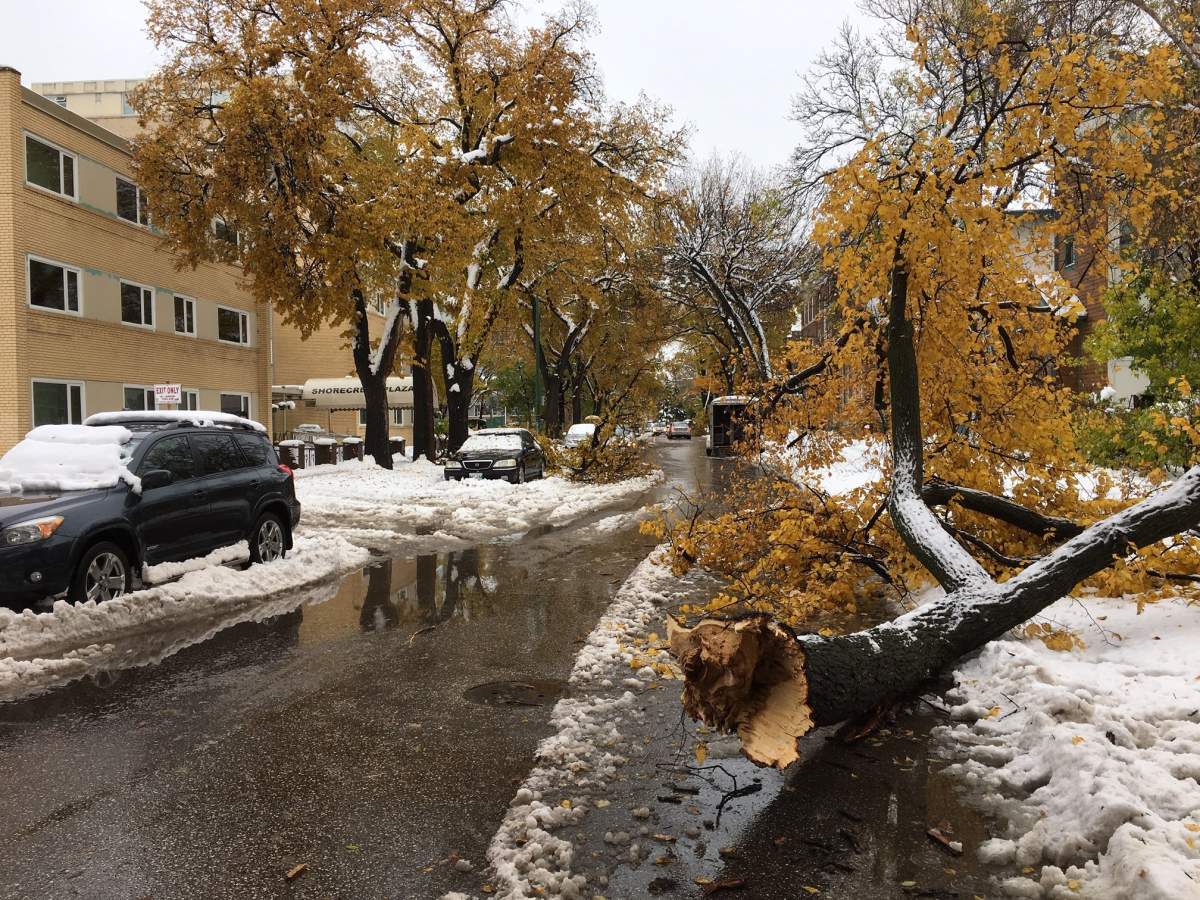As Manitobans began to prepare for Thanksgiving weekend last year, Mother Nature had other plans.

A blast of heavy, wet snow started pummelling much of the province on Thursday, Oct. 10. More than 250,000 customers lost power at some point as the slushy snow brought down trees, limbs and power lines.
“The strongest reaction I had was on the Saturday morning, driving around and doing a reconnaissance around the city and realizing we were in trouble,” City of Winnipeg forester Martha Barwinsky told Global News.
“There was a significant amount of damage that I had never seen before.”
Within Winnipeg, the city estimated around 30,000 trees were damaged or destroyed — roughly 10 per cent of all trees on city property.
“The damage ranged from a small tree with a broken limb right to a large tree that completely failed and everything in between,” Barwinsky said.
The city removed 600 trees from city property alone and there were likely hundreds of others on private property in the same situation, she added.
“It took us probably about two to four weeks to get the life safety concerns addressed and in check,” she said. “And we continued the cleanup until the end of January.”

More than 70 centimetres of snow fell in parts of the province and 35 centimetres in Winnipeg.
The City of Winnipeg pegged the cost of the storm and cleanup at $10 million.
Crews from four cities, including Saskatoon, Regina and Calgary, came to help out.
“I went into storm mode,” manager of parks and open space Dave Domke said. “It’s just a bit of a blur right now. There was so many requests coming from so many angles at us and we were trying to do the best that we could do.”

Get breaking National news
“I remember it’s almost like a bomb went off in many trees and just shattered them all over the place,” Domke said. “They look just blown up right across the streets.”
Power outages hit more than 250,000 Manitobans throughout the storm, with 160,000 customers without power at one time at the height of it.

“The snow that came down, it bent these branches over, snapping them all over the place, many of them, of course, on our power lines in Winnipeg and outside the city,” Manitoba Hydro media relations officer Bruce Owen said. “I don’t think we fully anticipated the amount of damage that caused.”
But the damage was massive.
Premier Brian Pallister declared a state of emergency on Oct. 13, early Sunday morning.
It was the first time the province had declared a state of emergency since 2014 when there was a surge in floodwaters.
The declaration allowed Hydro crews to access private land and invoked help from neighbouring provinces and states — Ontario, Saskatchewan and Minnesota — who were being asked for workers, poles and even transmission towers.
“With all those trees down we knew what we had to do, but we had to get there,” Owen said. “We had to remove trees all over the place to get to the broken pole that we had to replace.”
Manitoba Hydro said approximately 1,000 kilometres of wood pole distribution lines went down from the snow and winds and roughly 4,000 wood poles were snapped.
“More than 300 transmission towers were also damaged, affecting seven transmission lines for an extended period,” Owen said.
In total, Hydro said the storm damage cost $100 million.
“When you have 4,000 poles snapped or down and all those power lines, all those transformers, all those cross arms, had to be fixed,” Owen said. “The other challenge was… we don’t have 4,000 poles sitting in a yard. We had to get them.”
Portage la Prairie was essentially cut off from the rest of the province for nearly two weeks.

Aside from not being able to turn on the lights, residents had to cut back on water use and weren’t able to flush their toilets because the wastewater system runs on electricity.
“For some areas, we had to remove debris first before we were even able to get to the broken poles to fix,” Owen said.
More than 100 people were stuck in the city because of road closures. The municipality opened a reception centre to host people who couldn’t find hotel rooms.
Hydro said it took two weeks to get power back to all its customers.
The city’s fire chief, Phil Carpenter, told 680 CJOB the outage caused all kinds of problems for the community.
“Middle of the night on the Friday — we have no power, at all, for the city of Portage,” he said.
“They tell us there’s seven different ways power can be brought into the city of Portage, and all seven of these avenues were destroyed.”
Communication, he said, was a major concern, although Portage la Prairie was lucky to have backup generators for their cell towers, so emergency workers were able to stay in touch.
“Talking with other fire chiefs in our local district, they had no communication because their towers were completely down and they didn’t have backup generators like we did — so at least we were able to do that, to accomplish that goal.”
Carpenter said another big issue was getting the message out to residents to limit their use — even when it came to something as basic as having a shower.
“We didn’t want to overwhelm our systems, because we don’t have the capabilities of pumping that water sewage down the system,” he said.










Comments